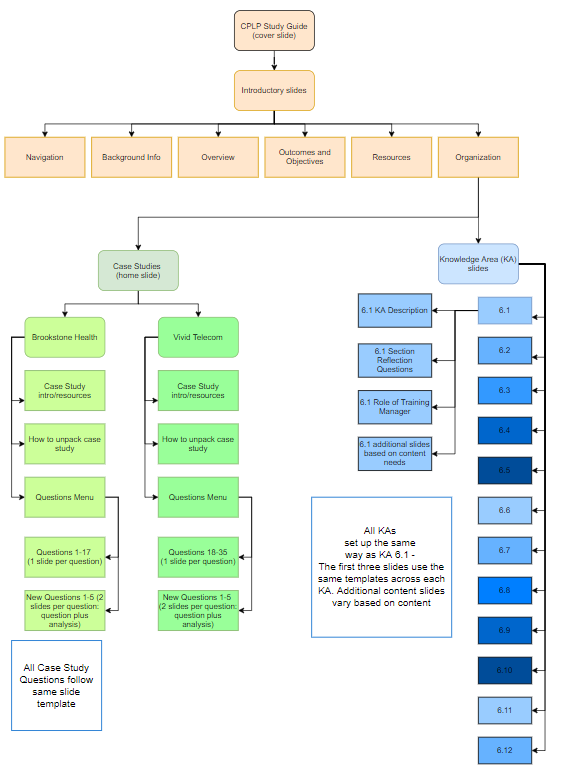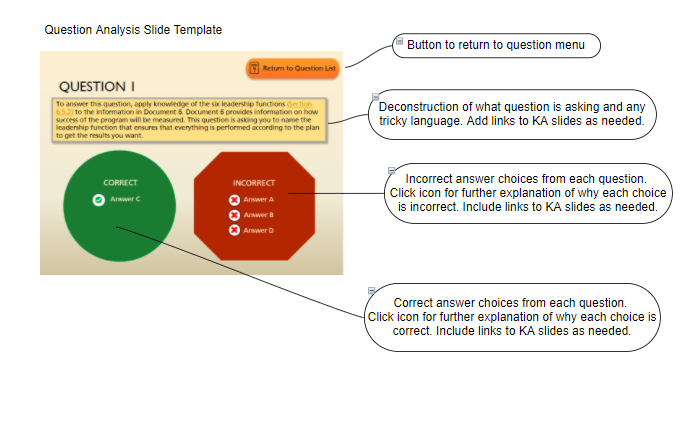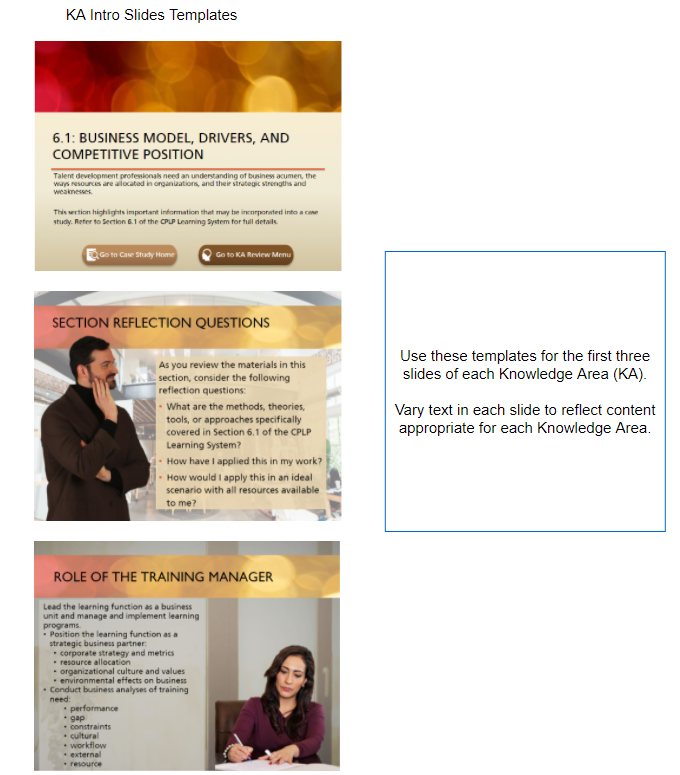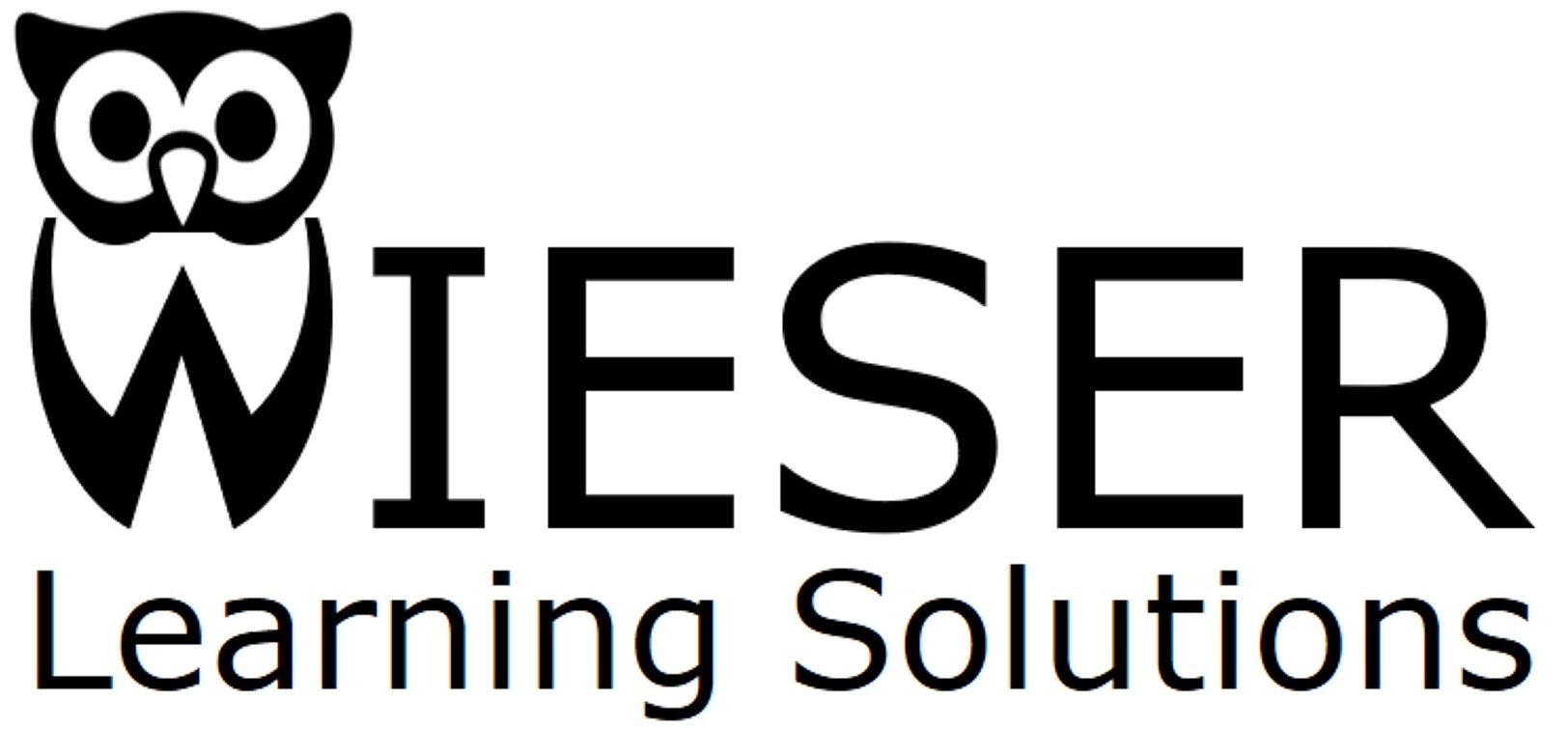Earlier this year, I began three tasks: working toward CPLP Certification, earning a certificate in e-Learning Instructional Design and Development, and learning Storyline 360. To be efficient, I combined studying for the CPLP Skills Application Exam (Managing Learning Programs) with using Storyline to complete my 6-week capstone project for the certificate program.
This CPLP Study Guide was developed in Storyline 360 as a result of combining these goals. Multiple authoring features were used to develop this study guide: interactive tables, embedded video, various quiz formats and feedback, lightbox slides, tabs and accordian interactions, graphic interactions, and internal links to allow learners to navigate based on their learning priorities.
Click the image to launch the CPLP Study Guide.
To develop this study guide, I determined the objectives/course outcomes then outlined how the course materials were organized into three main sections: introductory material, case studies, and knowledge areas. Since the major objective was to learn how to deconstruct the case study questions, I focused on developing the case study slides first.
Each case study was constructed with a similar format: introduction with links to the study materials, steps for unpacking the case study, a menu to access each case study question, and a link to access the five new questions.

I designed a slide layout that could be used for each question; I then developed each slide around the rationale for each correct and incorrect answer choice. Finally, I added the explanation of each answer, identifying the appropriate knowledge area and any needed or supplemental information. I also wrote few new questions for each case study and provided the associated answer slides.

As I developed the case study slides, I identfied whether a slide needed to be linked to a Knowledge Area. I identified the Knowledge Area slides that needed to be developed and began a rough outline/prototype for each slide directly within Storyline.
There are 12 knowledge areas within Chapter 6 (Managing Learning Programs) of the study materials; I created a separate scene in Storyline for each. For each knowledge area, I developed three common introductory slides then determined how much additional content was needed to answer the linked case studies slides and whether additional content was needed to understand that knowledge area.

Knowledge Area content was presented through various interactions (tab, accordion, buttons), quiz interactions (matching, drag and drop, selected responses) to test my recall as I studied for the exam, and through embedded video clips (found on YouTube) that explained certain concepts.
Once the content was complete for all case study and knowledge area slides, I added all internal links and cross references between the different slides and menus.
Finally, I developed the remaining slides: navigation, background, objectives slides, and others. These were provided to give the course more context, access to the study materials, and for course navigation.

